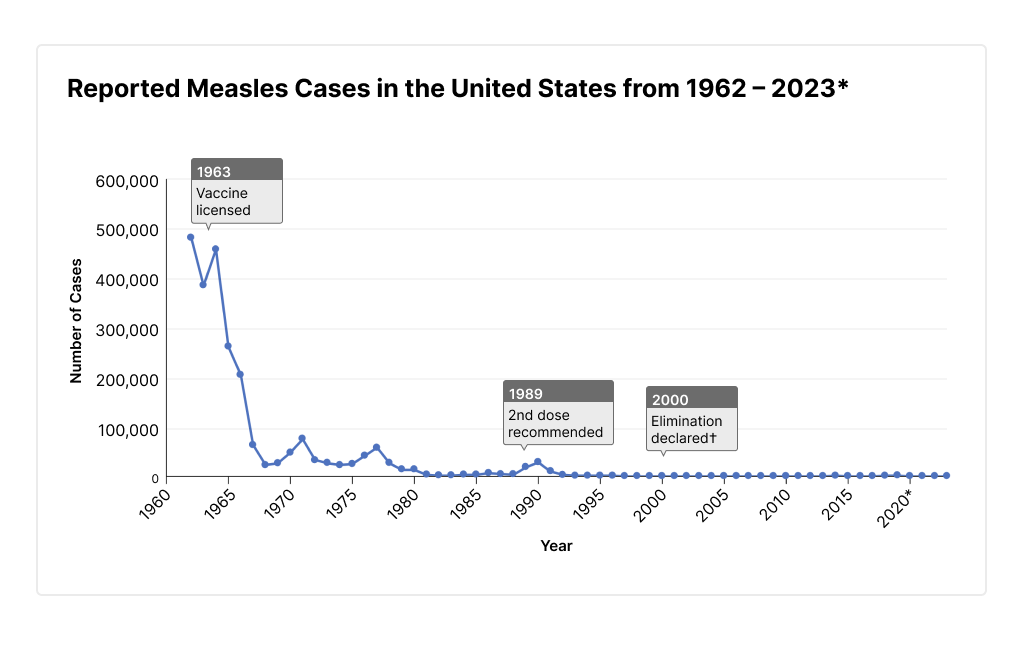Measles is making a comeback
The once-eradicated disease is no longer confined to fringe religious groups and international travel.
After the measles vaccine was introduced in the early 1960s, cases in the United States went from an average of 3—4 million cases per year to less than 5,000 per year.
Pre-vaccine, most cases and deaths were among children, with an average of 6,000 measles-related deaths each year.
Following a resurgence in 1989-1991, the United States took additional steps to prevent the virus from gaining a foothold in the country, adding a second MMR vaccine to the recommended schedule.
As a result of those efforts, measles was eradicated in the United States 25 years ago.
For decades, measles outbreaks were confined to isolated communities and didn’t pose a serious threat to the general population.
For example, the dramatic spike in measles cases in 2019 (the worst outbreak since 1992) were largely confined to unvaccinated Jewish Orthodox communities in the New York City - Jersey region, imported from those who had traveled to Israel.
But the mainstreaming of vaccine conspiracy theories in recent years now threatens to undo 65 years of progress in eliminating measles in this country.
Community protection from measles is maintained when 95% or more of the population is fully vaccinated.
Today, only 12 states meet that threshold, with some of the worst states (ex: Idaho, Florida) dropping as low as 79.6%.




